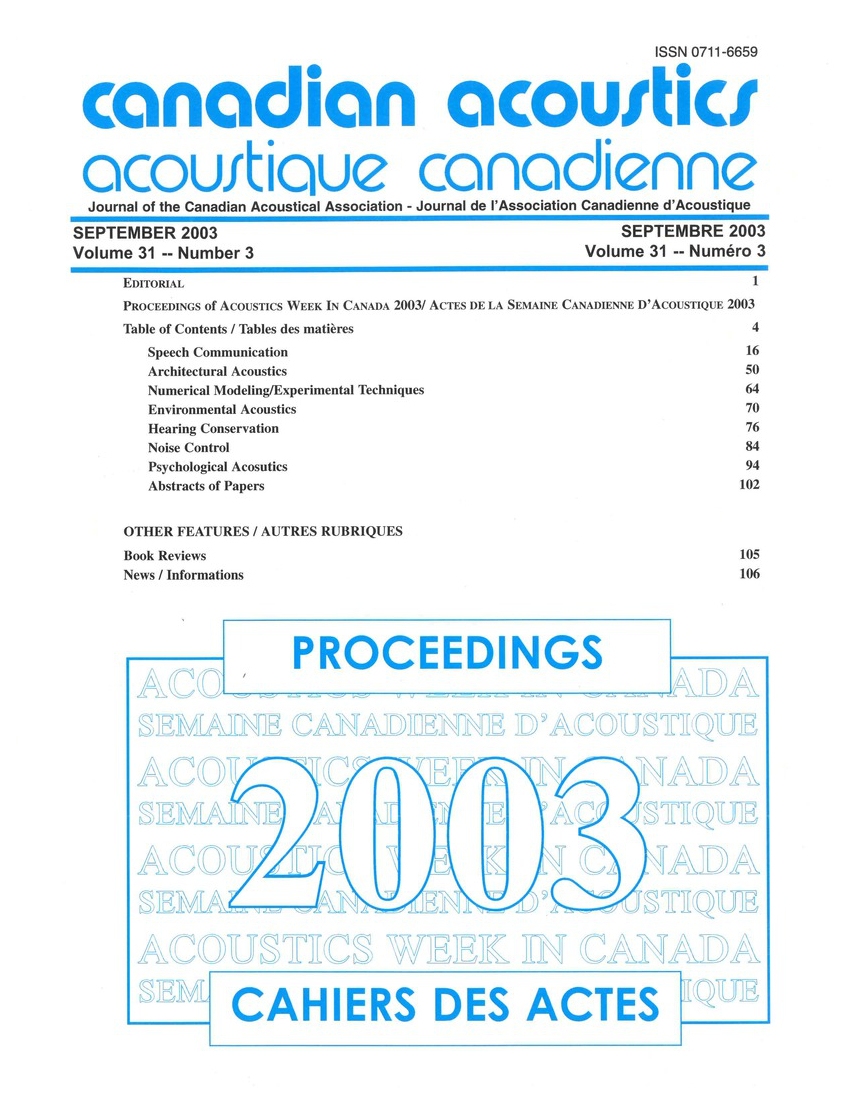Perception of increasing or decreasing signal intensity and effects of compression by hearing aids
Keywords:
Acoustic noise, Alarm systems, Algorithms, Audition, Automobile parts and equipment, Computer simulation, Computer software, Hearing aids, Signal processing, Signal to noise ratio, Statistical methods, Car horn, Signal compression, Signal intensityAbstract
Hearing aids are often equipped with non-linear noise reduction algorithms to increase the signal/noise ratio. A typical compression hearing aid will amplify soft sounds and reduce loud sounds. This paper aims to determine whether compression algorithms in hearing aids make intensity changes more difficult to perceive than if no compression is used. In addition, the study also aims to determine whether the effect of a hearing aid on the perception of intensity changes can be predicted by the compression ratio.Additional Files
Published
How to Cite
Issue
Section
License
Author Licensing Addendum
This Licensing Addendum ("Addendum") is entered into between the undersigned Author(s) and Canadian Acoustics journal published by the Canadian Acoustical Association (hereinafter referred to as the "Publisher"). The Author(s) and the Publisher agree as follows:
-
Retained Rights: The Author(s) retain(s) the following rights:
- The right to reproduce, distribute, and publicly display the Work on the Author's personal website or the website of the Author's institution.
- The right to use the Work in the Author's teaching activities and presentations.
- The right to include the Work in a compilation for the Author's personal use, not for sale.
-
Grant of License: The Author(s) grant(s) to the Publisher a worldwide exclusive license to publish, reproduce, distribute, and display the Work in Canadian Acoustics and any other formats and media deemed appropriate by the Publisher.
-
Attribution: The Publisher agrees to include proper attribution to the Author(s) in all publications and reproductions of the Work.
-
No Conflict: This Addendum is intended to be in harmony with, and not in conflict with, the terms and conditions of the original agreement entered into between the Author(s) and the Publisher.
-
Copyright Clause: Copyright on articles is held by the Author(s). The corresponding Author has the right to grant on behalf of all Authors and does grant on behalf of all Authors, a worldwide exclusive license to the Publisher and its licensees in perpetuity, in all forms, formats, and media (whether known now or created in the future), including but not limited to the rights to publish, reproduce, distribute, display, store, translate, create adaptations, reprints, include within collections, and create summaries, extracts, and/or abstracts of the Contribution.


